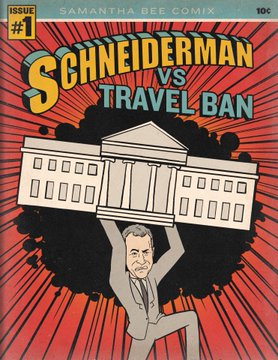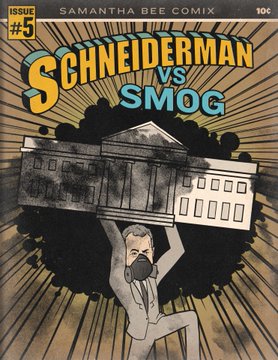Ninety miles from the South Eastern tip of the United States, Liberty has no stead. In order for Liberty to exist and thrive, Tyranny must be identified, recognized, confronted and extinguished.
infinite scrolling
Wednesday, May 9, 2018
Hot U.S. jobs market spurs push to reach those left behind
CLEVELAND (Reuters) - In Cleveland, a new road meant to cut commute times between the suburbs and a downtown medical hub has been redesigned as an “Opportunity Corridor” to bring businesses and jobs to poor neighborhoods along its way.
In St. Louis, development officials are repurposing a century-old hat factory into a space for small manufacturers to bring jobs back downtown, while Baltimore has committed $500 million to a private-led overhaul of an old industrial zone.
The efforts reflect a growing consensus among economists and policymakers that keeping the overall economy on track will not be enough to help areas left behind by a decade-long recovery.
The current expansion is among the longest ever and brought national unemployment to an 18-year low. Yet over 6.3 million are still out of work, many of them clustered in cities with chronic, high unemployment. A Reuters review of federal data shows that out of those unemployed about a quarter live in 50 urban counties with above-average unemployment, and a third in just 100.
Often with large minority populations, those areas include cities like St. Louis, Cleveland and Baltimore - 20th century industrial powerhouses hit hard by globalization, demographic changes, and the shift to a service-based economy.
Amid the tightest labor markets in two decades and labor force growth the slowest in half a century, local and national officials are turning to targeted training schemes, new investment incentives, and other strategies to bring jobs closer to the unemployed.
“We definitely need to be thinking in terms of place as an important component...Increasing the number of people who are connected to the economy is fundamental to the maximum employment goal,” Atlanta Federal Reserve bank president Raphael Bostic told Reuters in an interview. “What counts as success? Is it two million people? Five million people?” Bostic said, referring to the number of jobless. “We can get to maximum employment and still have a lot of distress.”
PILE OF CASH
While monetary policy works on the national level, the Fed under former chair Janet Yellen and now under chairman Jerome Powell has been only gently raising interest rates in part to see if it can help lagging areas join the recovery.
However, a consensus is building among economists and politicians that the persistence of unemployment and poverty in certain areas needs to be addressed with direct, “place-based” policies.
The tax code approved by the Republican congress in December included a bipartisan-backed measure to support such locally-directed efforts, granting a capital gains waiver for those who invest in locations included on a list of distressed census tracts being chosen by state governors.
Advocates, who include Donald Trump’s Council of Economic Advisers Chair Kevin Hassett and Jared Bernstein, a former Obama administration adviser, hope it shifts capital from buoyant stock markets and high-value real estate to blighted rural pockets, struggling suburbs, or ailing inner city neighborhoods.
“Investors are sitting on a large pile of (unrealized) capital gains,” said John Lettieri, president of the Economic Innovation Group, a think tank that sponsored a 2015 paper by Hassett and Bernstein outlining the idea.
“We think the scale is likely to be measured certainly in the tens of billions of dollars,” Lettieri said about how much of an estimated $1 trillion in unrealized capital gains could make its way to neglected areas. Such amounts...
In St. Louis, development officials are repurposing a century-old hat factory into a space for small manufacturers to bring jobs back downtown, while Baltimore has committed $500 million to a private-led overhaul of an old industrial zone.
The efforts reflect a growing consensus among economists and policymakers that keeping the overall economy on track will not be enough to help areas left behind by a decade-long recovery.
The current expansion is among the longest ever and brought national unemployment to an 18-year low. Yet over 6.3 million are still out of work, many of them clustered in cities with chronic, high unemployment. A Reuters review of federal data shows that out of those unemployed about a quarter live in 50 urban counties with above-average unemployment, and a third in just 100.
Often with large minority populations, those areas include cities like St. Louis, Cleveland and Baltimore - 20th century industrial powerhouses hit hard by globalization, demographic changes, and the shift to a service-based economy.
Amid the tightest labor markets in two decades and labor force growth the slowest in half a century, local and national officials are turning to targeted training schemes, new investment incentives, and other strategies to bring jobs closer to the unemployed.
“We definitely need to be thinking in terms of place as an important component...Increasing the number of people who are connected to the economy is fundamental to the maximum employment goal,” Atlanta Federal Reserve bank president Raphael Bostic told Reuters in an interview. “What counts as success? Is it two million people? Five million people?” Bostic said, referring to the number of jobless. “We can get to maximum employment and still have a lot of distress.”
PILE OF CASH
While monetary policy works on the national level, the Fed under former chair Janet Yellen and now under chairman Jerome Powell has been only gently raising interest rates in part to see if it can help lagging areas join the recovery.
However, a consensus is building among economists and politicians that the persistence of unemployment and poverty in certain areas needs to be addressed with direct, “place-based” policies.
The tax code approved by the Republican congress in December included a bipartisan-backed measure to support such locally-directed efforts, granting a capital gains waiver for those who invest in locations included on a list of distressed census tracts being chosen by state governors.
Advocates, who include Donald Trump’s Council of Economic Advisers Chair Kevin Hassett and Jared Bernstein, a former Obama administration adviser, hope it shifts capital from buoyant stock markets and high-value real estate to blighted rural pockets, struggling suburbs, or ailing inner city neighborhoods.
“Investors are sitting on a large pile of (unrealized) capital gains,” said John Lettieri, president of the Economic Innovation Group, a think tank that sponsored a 2015 paper by Hassett and Bernstein outlining the idea.
“We think the scale is likely to be measured certainly in the tens of billions of dollars,” Lettieri said about how much of an estimated $1 trillion in unrealized capital gains could make its way to neglected areas. Such amounts...
In Eric Schneiderman’s Fall, Trump Resistance Loses ‘Ringleader’
Just two weeks ago, New York Attorney General Eric Schneiderman was coming off a legal victory against the Trump administration’s deregulatory agenda for fuel efficiency standards.
“As we’ve proven again and again, when the Trump administration puts special interests before public health and our environment, we’ll take them to court—and we will win,” Schneiderman said April 23.
And Saturday, Schneiderman boasted about taking on the Trump administration in a tweet with comic book art presenting him as a superhero.
But Monday evening, the Democrat resigned as New York attorney general amid allegations that he had beaten and physically abused four women.
The sudden fall came just hours after he announced plans to lead eight state attorneys general in a lawsuit against President Donald Trump’s Environmental Protection Agency.
Touting his lawsuits against the Trump administration on the travel ban, environmental issues, immigration, and other matters, Schneiderman embraced his stature as a “resistance” figure. In a February video made for the leftist MoveOn.org to encourage voting in local elections, he said: “If you really, truly want to be part of the resistance, this is where the fight lives.”
Arkansas Attorney General Leslie Rutledge, chairwoman of the Republican Attorneys General Association, called Schneiderman the “ringleader” of anti-Trump activists fighting the president in the courts.
“As Schneiderman leaves office in disgrace, his impact and influence with activist Democrat state attorneys general and candidates cannot be overstated,” Rutledge told...
“As we’ve proven again and again, when the Trump administration puts special interests before public health and our environment, we’ll take them to court—and we will win,” Schneiderman said April 23.
And Saturday, Schneiderman boasted about taking on the Trump administration in a tweet with comic book art presenting him as a superhero.
The sudden fall came just hours after he announced plans to lead eight state attorneys general in a lawsuit against President Donald Trump’s Environmental Protection Agency.
View image on Twitter
#BREAKING: I’m leading 8 AGs against Scott Pruitt’s absurd plan to have the @EPA limit the science it uses to make decisions about our public health and our environment.
More here: https://on.ny.gov/2jFMZMs
Touting his lawsuits against the Trump administration on the travel ban, environmental issues, immigration, and other matters, Schneiderman embraced his stature as a “resistance” figure. In a February video made for the leftist MoveOn.org to encourage voting in local elections, he said: “If you really, truly want to be part of the resistance, this is where the fight lives.”
Arkansas Attorney General Leslie Rutledge, chairwoman of the Republican Attorneys General Association, called Schneiderman the “ringleader” of anti-Trump activists fighting the president in the courts.
“As Schneiderman leaves office in disgrace, his impact and influence with activist Democrat state attorneys general and candidates cannot be overstated,” Rutledge told...
The 90 Miles Mystery Box: Episode #251
You have come across a mystery box. But what is inside?
It could be literally anything from the serene to the horrific,
from the beautiful to the repugnant,
from the mysterious to the familiar.
If you decide to open it, you could be disappointed,
you could be inspired, you could be appalled.
This is not for the faint of heart or the easily offended.
You have been warned.
Tuesday, May 8, 2018
Subscribe to:
Comments (Atom)













